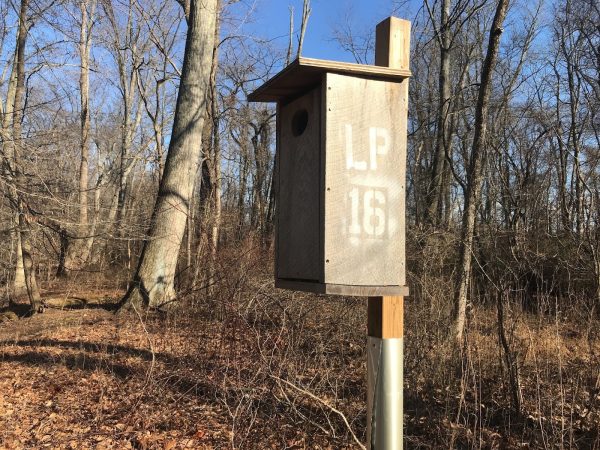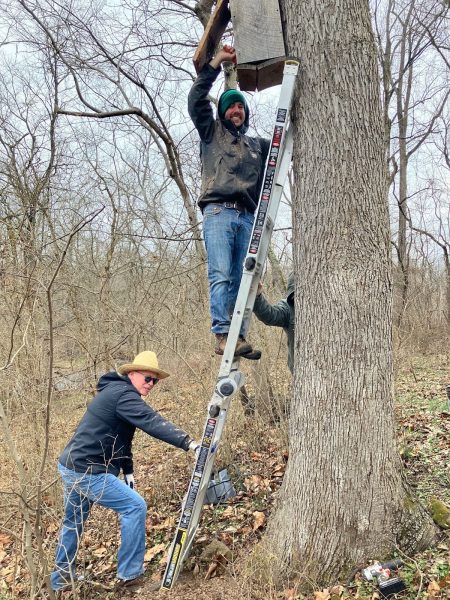We have lost almost 3 billion birds since 1970 in North America alone. There are many causes, however, habitat loss and degradation are some of the main reasons. The development of land into acres of lawns with exotic and invasive plants has destroyed habitats in many ecosystems across North America, reducing the bird populations that previously relied on those properties for food and shelter. But what can you do? The first step to creating wildlife habitat in developed areas is reducing lawn coverage and planting native species. Every effort helps, even if those native plants are potted on your apartment balcony. This provides the necessary food resources for wildlife, but what can you do to create a habitat for them to raise their young?
Nest Cavities
There are many species of wildlife, including some mammals, that utilize hollow chambers or “cavities” to nest and raise their young. These cavities occur naturally in standing trees, especially in dead trees called “snags.” Many snags have been historically removed due to the public opinion of them being unsightly or dangerous. However, snags are invaluable to wildlife and their habitats. Woodpeckers often chisel out their own nest cavities each year that will be subsequently taken over by other wildlife species. However, you are able to make artificial cavities that do not require dead-standing trees or woodpeckers. Next, we’ll discuss some of the common species you can attract to your property with nest boxes.
Bluebirds
Eastern bluebirds are the charismatic birds that people most commonly attract to their properties by installing nest boxes. This species was in severe decline only a few decades ago, however conservation actions, like the installation of nest boxes, has helped to increase their populations. These birds prefer open habitats where they can visually hunt for insects and see predators. Bluebird boxes are small and are appropriate for attracting other bird species like tree swallows, house wrens, chickadees, etc. Be aware that invasive house sparrows will readily use boxes of this size, so monitoring the boxes is important.

Waterfowl
Wood ducks are one of the most common duck species in Pennsylvania, however they’re rarely seen. The males are arguably one of the most beautiful birds in nature. They prefer habitats close to water like ponds, lakes, streams, and rivers that are surrounded by wooded areas where they nest in tree cavities. These ducks are unique for having the ability to perch and nest in trees unlike most other waterfowl. Therefore wood ducks, along with mergansers, will utilize larger nest boxes when they are in the correct habitat. Unlike many bird species where the parents bring food to their young inside the nest, waterfowl need to bring their young to food sources. Soon after hatching, wood ducklings jump out of their nest cavities, which are sometimes 60+ feet up in a tree!

Raptors

Adding and maintaining nest boxes on your property
Now that you’re thinking about adding nest boxes to your property, there are a few things you should consider:
- Box placement: It is important to put the right box in the right place. A nest box in the wrong location may attract invasive species of birds that will readily kick out native species from nest sites. To avoid attracting European starlings, create a box with a smaller hole that does not allow starlings to enter. If you are adding a nest box for a larger species, the placement is key to attracting the correct species. Make sure you have the adequate habitat before installing a box, or there is little chance of attracting the target species to begin with.
- Box dimensions: The design and dimensions of the box is very important in attracting the correct species. The hole size is unique to the species you are attracting and the wrong hole size will allow for unwanted guests. There is also a minimum cavity size requirement for each species to raise their young.
- Predator guards: These are often recommended to keep the adult and young birds safe. There are many different options that exclude predators from reaching the inside of the box.
- Monitoring: It is rewarding to see which bird species utilize the boxes, but monitoring is also an important thing to do. Predators may pose an issue in which the installation of a predator guard becomes apparent. It is also important to make sure invasive species do not take over the box. You can discourage house sparrows and starlings by removing their nesting material, however this may take multiple attempts until they abandon the box and move on. Each bird species makes a different type of nest and can be identified by the materials they use. Here is a link to learn more about monitoring your boxes.
- Maintenance: Maintenance of nest boxes is important to keep the birds coming back and to keep them healthy. Cleaning out old nesting materials and egg fragments during the winter months will encourage birds to reuse the same cavity. However, some birds do not bring nesting materials into their cavity, so they rely on the existing wood chips or debris to nest on. Cleaning out the box also helps to reduce disease and other potential pests. A well-maintained nest box may get the same birds returning to raise their young year after year.

Interested in adding a nest box to your property? Check out these plans on how to make your own wildlife homes from the PA Game Commission: https://www.pgc.pa.gov/InformationResources/GetInvolved/Pages/WildlifeHomePlans.aspx
Tyler Kovacs, Conservation Steward
